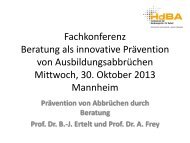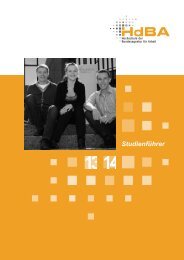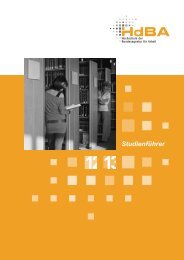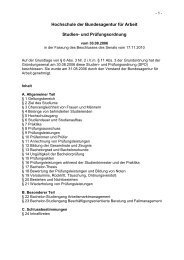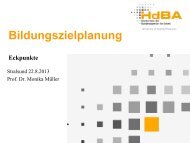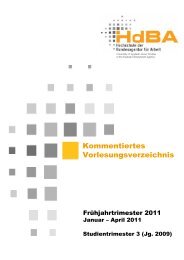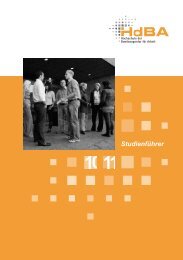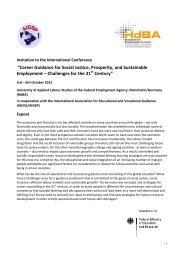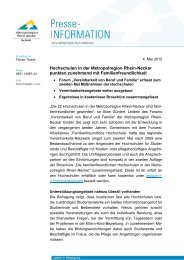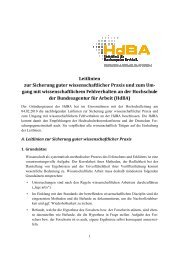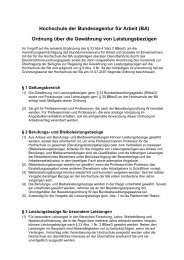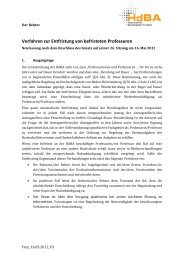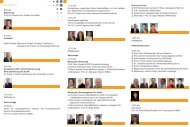Brain Drain - Hochschule der Bundesagentur für Arbeit
Brain Drain - Hochschule der Bundesagentur für Arbeit
Brain Drain - Hochschule der Bundesagentur für Arbeit
Create successful ePaper yourself
Turn your PDF publications into a flip-book with our unique Google optimized e-Paper software.
���������������������������������������������������<br />
���������������������������������������<br />
�<br />
�<br />
The main areas for the counsellor’s attention, in or<strong>der</strong> to get enough information for a<br />
precise diagnosis, refer to skills, abilities, personality and interests. The same areas<br />
are assessed in BD – BG counselling in the light of the multicultural situation.<br />
Accordingly the BD – BG counsellors should consi<strong>der</strong> also the following assessment<br />
areas: differences in the environment of the above mentioned categories’ application<br />
as well as client’s linguistic competencies, cultural and behavioural competence in<br />
regard with the professional life in the country where the client will work, influential<br />
factors such as family, religion, orientation towards native country’s dominating<br />
criteria in decision making or those of the current culture, etc.<br />
However, no matter the type of activity, the counsellor can use these instruments – in<br />
fact, their selection depends on the counselling problem and on the strategy decided<br />
by the specialist. The career counsellors can generally use two assessment methods<br />
during the process: a non-standardized form (or qualitative, informal) and a<br />
standardized one (formal, quantitative).<br />
3. Course 3: Types of Assessment Instruments<br />
3.1 Learning Objectives<br />
• The BD – BG counsellor is familiar with the main areas for a precise diagnosis<br />
concerning career guidance and advice giving refer to skills, abilities, personality<br />
and interests. (TAX 2 – foundation competences, client-interaction competences)<br />
• The BD – BG counsellor learns to use only those instruments that have been<br />
adapted for the target populations (BD – BG). (TAX 3 – foundation competences)<br />
• The BD – BG counsellor learns to exercise critical judgment when they use<br />
standardized assessment tools and methods in the context of BD – BG. (TAX 3 –<br />
foundation competences)<br />
• The course gives the BD – BG counsellor an overview of approaches to an<br />
assessment of vocational interests and testing of vocational abilities from<br />
multicultural perspectives. (TAX 3 – foundation competences)<br />
3.2 Unit 1: Formal Assessment<br />
The standardized instruments are based on statistic calculation and reporting to the<br />
group and have formal procedures to administrate and score, those procedures<br />
cannot change anytime the test is administrated. The standardized assessment<br />
instruments are designed to collect objective information about the client (personality<br />
and behaviour features). The instruments that are mostly used are the formal<br />
interviews and tests. Moreover, the computer tests started to be widely used – selfapplied<br />
or with a trainer. Implementation of standardized tests requires specific<br />
training. The advantages of these methodologies are that they provide comparatively<br />
reliable results which can be compared with defined norms of population.<br />
Implementation of standardized tests has its limitations.<br />
142



